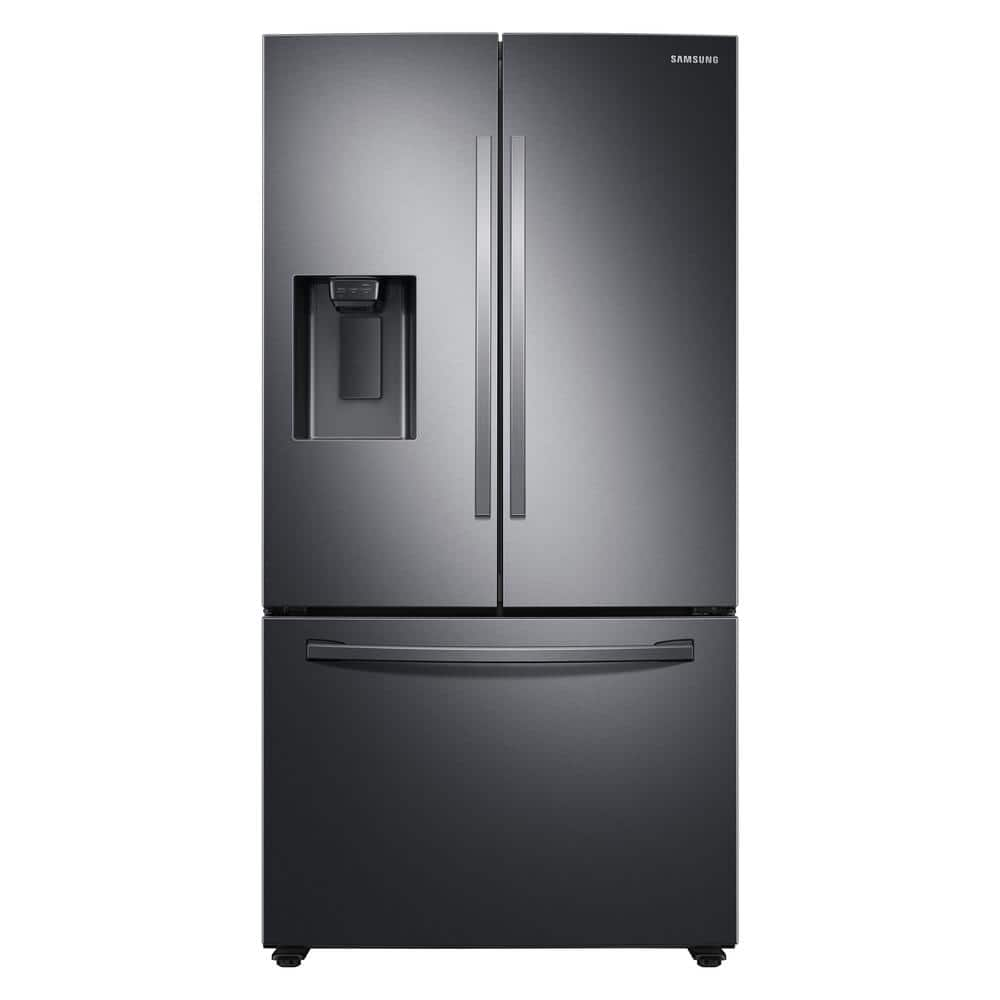Samsung 27 cu. ft. French Door Refrigerator in Fingerprint Resistant Black Stainless Steel
Modern design with 10% more capacity than previous models. Spend less time cleaning with Fingerprint Resistant Finish. ADA Compliant with easy to reach controls.
The Samsung 27 cu. ft. Large capacity 3-Door French Door refrigerator is beautifully designed, with a minimal dispenser, sleek-edge doors, and modern handles. The clean lines and modern form blend beautifully into your kitchen, while the fingerprint resistant finish withstands everyday smudges.
- A completely redesigned interior provides enough space for everyone’s tastes, with 10% larger capacity
- Clean lines and a modern form, blend beautifully into any kitchen
- A Fingerprint Resistant finish withstands everyday smudges, so you spend less time cleaning
- All-Around Cooling with Multi-vent technology keeps items evenly cooled on every shelf
- Large capacity ice maker, stores up to 4.2 lbs. of ice
- Integrated dispenser with touch display provides easy access to water, cubed or crushed ice
- Large drawer space for storing platters, beverages and more
- LED lighting designed to beautifully light up the interior of your fridge
- Specially designed handle allows for easy opening and closing
- ENERGY STAR Certified – Eco-friendly and energy-efficient
- Easy to reach controls for everyone (ADA Compliant)
- Middle shelf can be easily adjusted to fit taller items
Additional information
| Depth (Excluding Handles) | 32.8 |
|---|---|
| Depth (Including Handles) | 35.4 |
| Depth (Less Door) | 28.8 |
| Depth With Door Open 90 Degrees (In) | 47.25 |
| Height to Top of Door Hinge (in.) | 70 |
| Height to Top of Refrigerator (in.) | 70 |
| Product Depth x Height x Width (in.) | 35.4 x 70 x 35.75 |
| Refrigerator Width (In.) | 35.75 |
| Certifications and Listings | ADA Compliant,Energy Star,UL Listed |
| Manufacturer Warranty | One (1) Year Parts and Labor on Refrigerator Five (5) Years Parts and Labor on Sealed Refrigeration System Only* Ten (10) Years Parts and Five (5) Years Labor on Digital Inverter Compressor |






by Marcy
It states fingerprint resistance but unfortunately that is not true. Also the water spout leaks and leaves water spots.
by Ratt
amazing amouth of space in a normal dimension refrigerator. ice maker/flitered ice water and large enough freezer that its rare i use the freezer in the garage. beautiful design without over the top gadgetry. so far proud of this selection/investment
by Ino
Lots of space, but the water is SO slow and it’s not cold at all. Ice maker is fast and we love the option for crushed ice. Would have given 5 stars if it didn’t take 30 minutes to fill a water bottle – with WARM water.
by Big
A lot of the reviews weren’t the greatest but so far so good love the look.
by Chris
Overall we love our fridge, just wish the water dispenser has some sort of stopper to prevent water from dripping down the fridge and a light that would come on when dispensing water.
by Foster
It’s very spacious and beautiful.